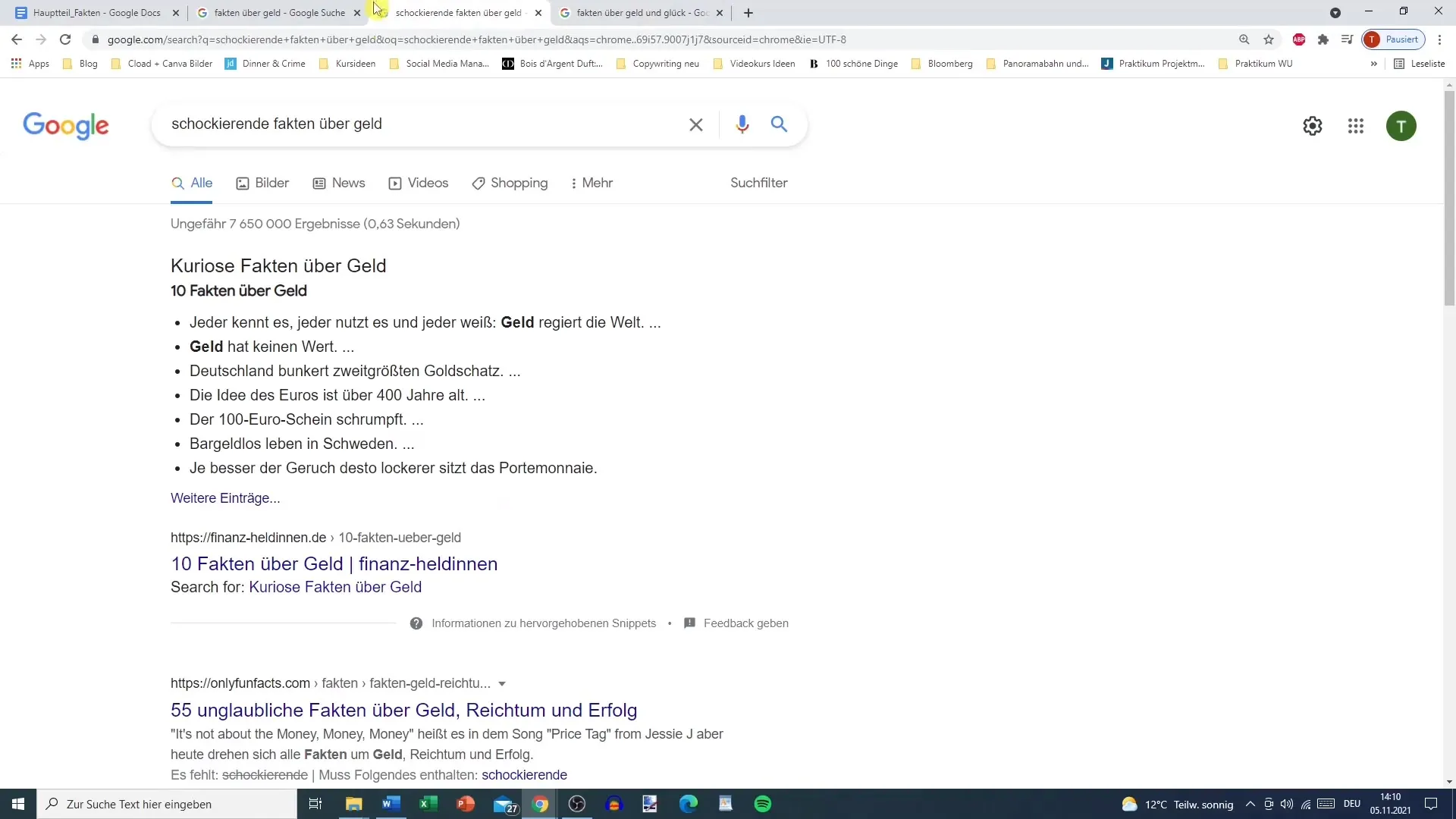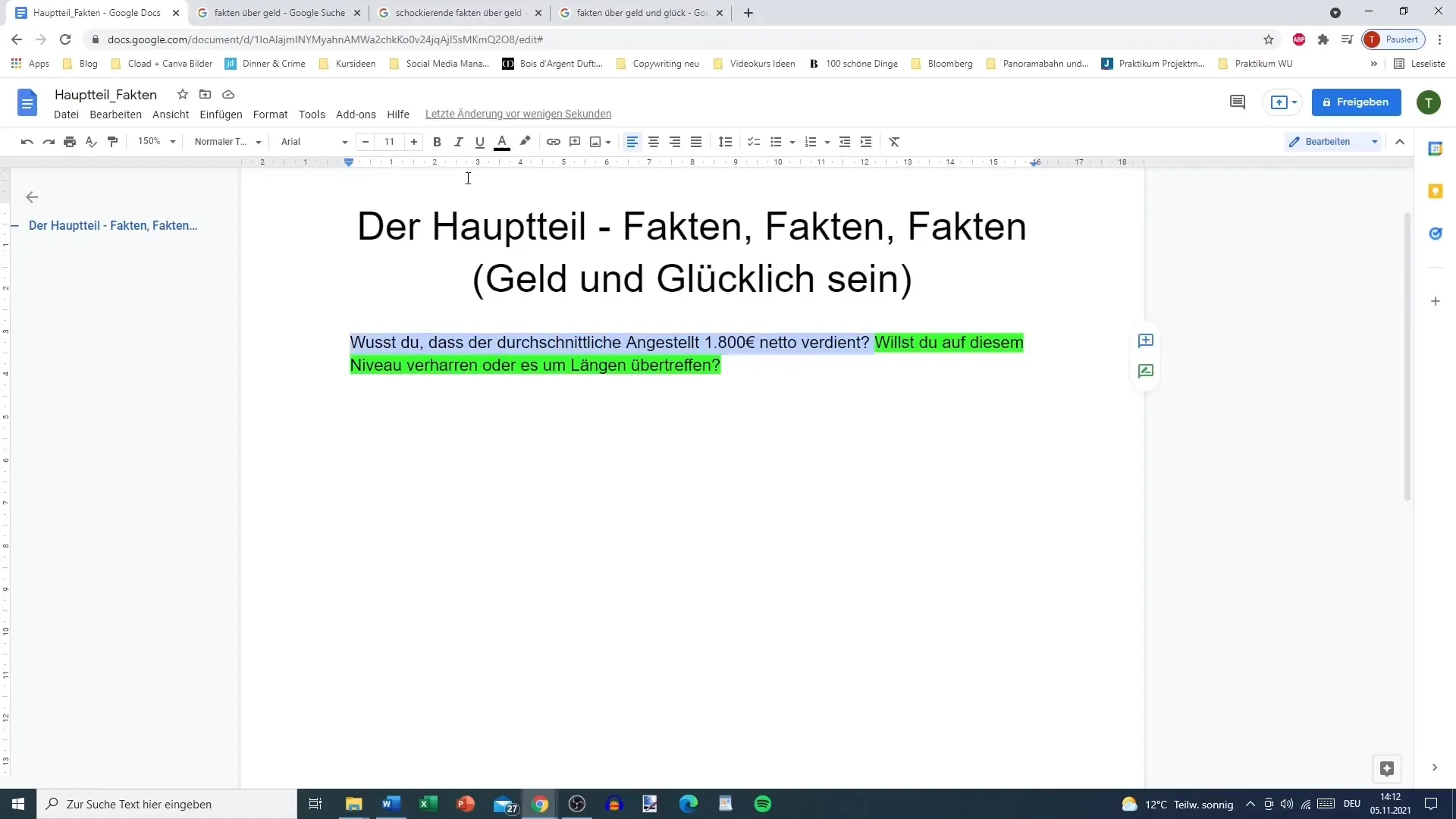You want your texts to grab the attention of your readers and encourage them to keep reading. A proven method for this is the use of facts. In this guide, I will show you how to start with a shocking or remarkable fact to pique the interest of your readers. By effectively choosing information, you can make your topic more engaging and maintain the curiosity of the readers. Let's walk through how to lay the foundation for a gripping text with targeted facts together.
Key Insights
- By starting with a captivating fact, you can immediately capture the attention of your readers.
- Facts should be relevant and interesting for your topic and target audience.
- The fact can be presented in the form of a question or as a meaningful sentence.
- Using numbers and shocking information can stimulate the emotional reaction of the readers.
Step-by-Step Guide
Step 1: Choose a Relevant Fact
The first step is to choose a fact that is not only interesting but also relevant to your text. Think about the topic you want to address and research facts related to it. An example could be the fact that in a specific year, a particular country had a high number of cigarettes smoked.

Step 2: Present the Fact Memorable
How do you phrase the fact? The presentation is crucial. You can formulate the fact as a surprising statement or as a question that prompts readers to think. For example: "Did you know that the average person in Austria smoked 500 cigarettes in 2019?" This arouses interest and makes readers pause.
Step 3: Connect to the Fact
After presenting the fact, you should use it to raise another question or establish a connection to your main topic. For example, you could ask: "Do you want to know how many of these smokers managed to quit?" This encourages readers to keep reading and engage with your solutions.
Step 4: Highlight Relevance for the Reader
It is important that the fact always relates directly to the desires and needs of the reader. If you are writing about smoking, you should also emphasize the health consequences and the desire to quit smoking. For example, you can mention how many people should be warned about the health risks of smoking.
Step 5: Make Facts Emotional
Facts alone are often not enough. Use emotions in your text to reach the readers. This may mean using shocking or curious facts that leave a strong emotional impression, either through concern for health or through wonder at strange aspects of human behavior.

Step 6: Use a Clear and Concise Writing Style
Your writing style should be clear and easily understandable. Avoid complicated sentences that could confuse the reader. Keep the fact simple and direct so that readers immediately grasp the benefits. An unnecessarily complicated text could quickly lose readers.
Step 7: Lead to the Topic
After presenting the fact and the emotional appeal, it is important to lead back to your main topic. Gracefully transition into the main part of your text by explaining how the fact relates to the topic. For example: "In this article, you will learn how to effectively quit smoking."

Summary - Using Facts as an Introduction in Copywriting: How to Engage Your Readers
To captivate your readers from the start, facts are an indispensable tool. They not only help set the tone of your text but also pique the curiosity of the readers. Whether shocking statistics or interesting information - the right fact cleverly introduces your topic and motivates readers to further engage with your content.
Frequently Asked Questions
What are good sources for shocking facts?Good sources include scientific studies, surveys, or current news portals.
How many facts should I use at the beginning?It's best to start with one or a maximum of two impressive facts to arouse curiosity.
Can I also use humorous facts?Yes, humorous or curious facts can also be very appealing and increase reader interest.
What role does the fact play in the overall text?The fact should serve as a springboard to introduce the topic and encourage readers to continue reading.
Is it important to cite the source of the fact?Yes, it is advisable to mention the source to establish credibility and gain the trust of the readers.


